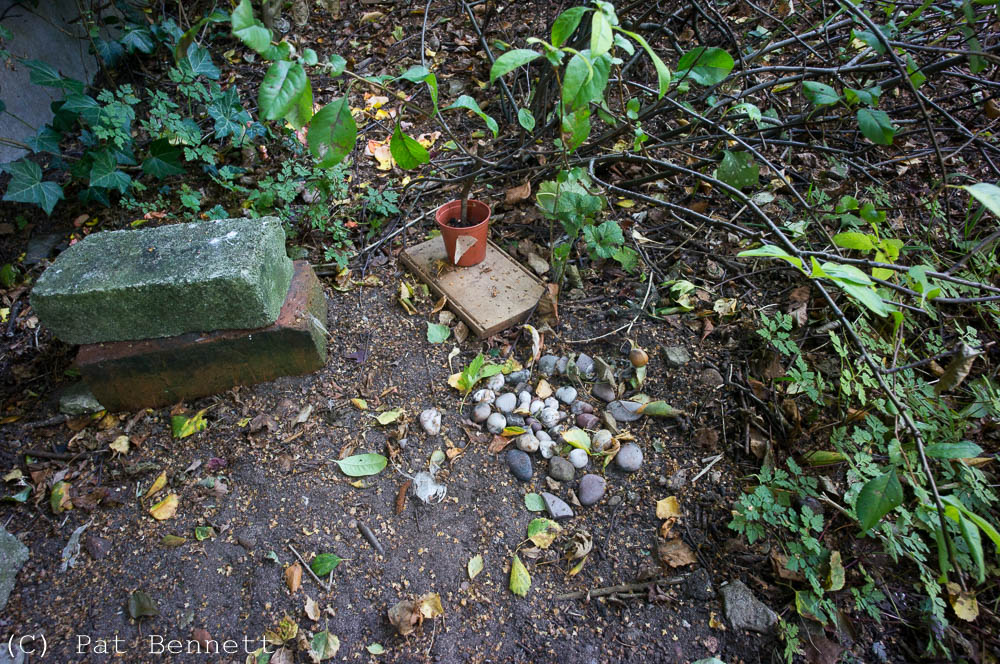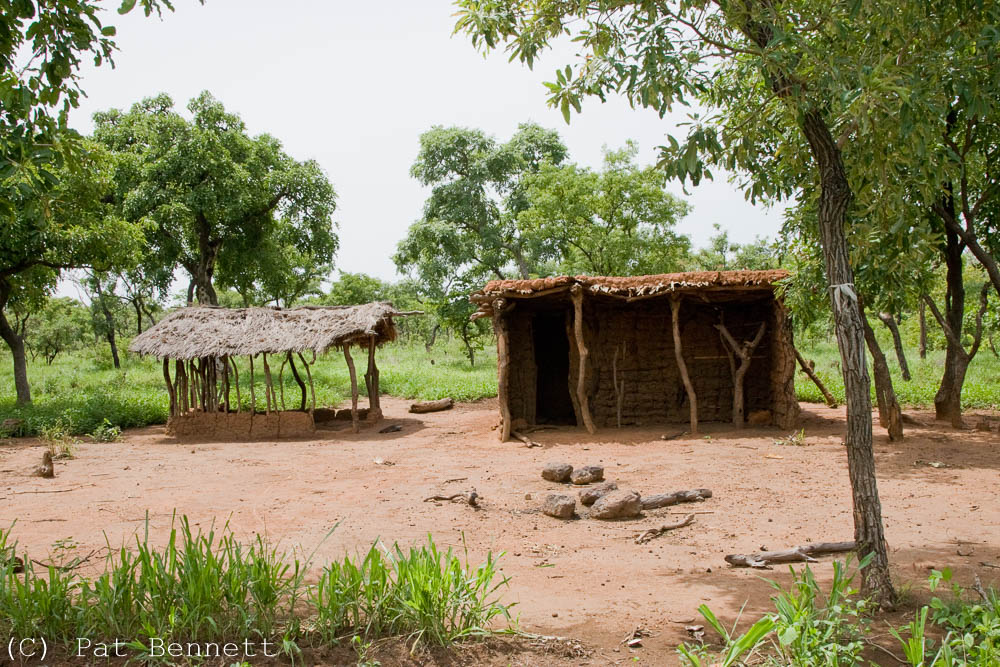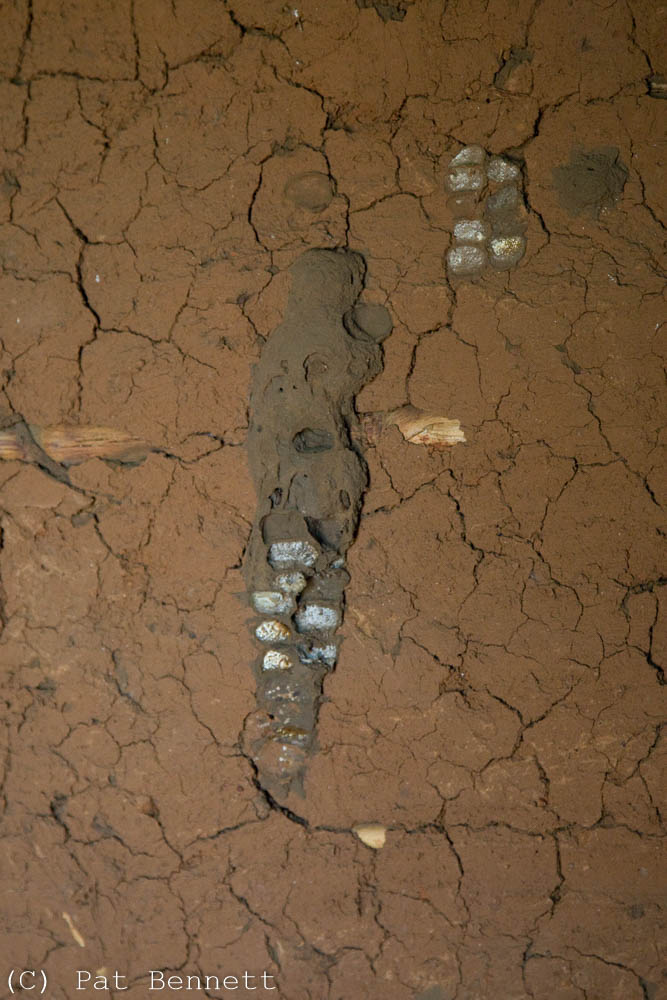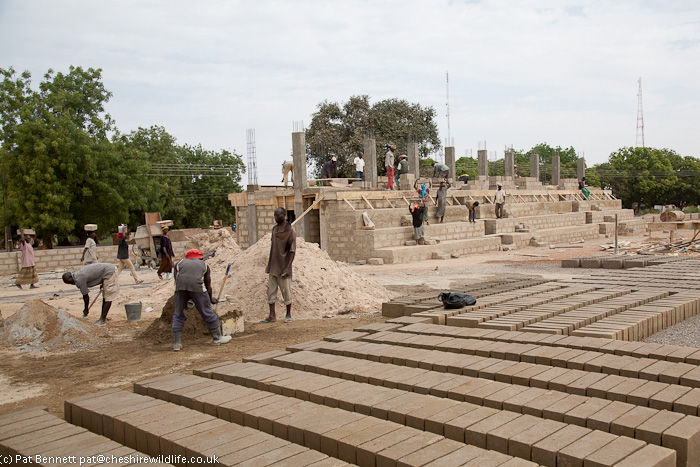The great grand children have appropriated an area of the border at the bottom of our garden, under the acer tree, as their Den.

The den is a threat to all of the flowers in our garden, as Cara and Cade seem to think that they look much better in their den than boringly attached to their parent plant.
However, the other day, I noticed that Cara had hit on a less anti-social mode of decoration – she had liberated some nice looking pebbles from next door’s drive, and pressed them into the earth to enliven their abode.

As I looked at the pebbles, and thought about dens, seven-year-olds, and concepts of beauty and style, my mind took a sideways step and latched on to a memory of another dwelling, ornamented by another human being.
It was a hot day in a remote part of Ghana in 2009. The area belonged to the Gonja people, and even though it was remote and very poor, it was notable for the number of people – migrants – who had come from other countries in west Africa to make a living there.
I was in a four wheel drive vehicle, bumping along a primitive track. On either side of the track, the earth showed through the thin grass a dusty red, with termite mounds scattered between the trees.
As we rounded a bend in the track, some distance from the nearest village, I saw a hut a short way into the bush, and we stopped so that I could take a look.

There was no-one in sight, and when I looked around the hut and the animal shelter beside it, I could find no belongings or anything of value. Perhaps the hut was abandoned, or maybe its owners were itinerant farmers who only used it for part of the year.
Sweating profusely in the blinding sun, I entered the hut. When my eyes adjusted to the deep shade, I took in the lack of belongings of any sort, and then my eye was caught by a gleam in the wall.

Embedded in the mud wall were these shiny stones, and as I stood there looking at them, I wondered about the life of the people who had lived in the hut. I wondered about how difficult was their struggle for survival, and how the urge towards beauty is in us all. I wondered who it was that had the impulse to decorate the hut. Too high up the wall to be a seven year old.
Was the connection made by my mind real? The connection between the decorations in my garden den and the African hut? Or were there complexities of culture embodied in those stones in the mud wall that went beyond the simple urge to decorate and domesticate a dwelling?
Anyway, that’s the story behind two photographs taken today and two photographs taken seven years ago.

